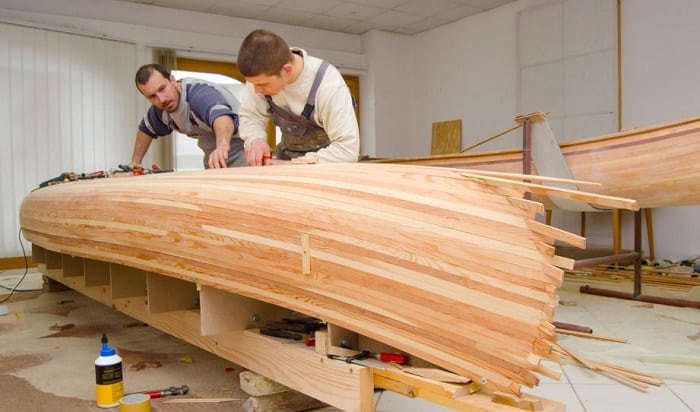Sunday, November 24, 2024
How to Make a Wooden Boat That Is Safe and Durable

Building a Safe and Durable Wooden Boat: A Beginner's Guide
Hey there, fellow boat enthusiasts! So you're dreaming of building your own wooden boat? That's awesome! It's a challenging but incredibly rewarding project. This guide will walk you through the process, focusing on safety and durability to ensure your boat is not only beautiful but also seaworthy.Choosing Your Design and Materials
Before you even pick up a saw, you need a plan! Don't just jump in; research is key. Start with a simple design. A small rowboat or a kayak is a great place to begin. Avoid overly complex designs until you've gained some experience. There are tons of free plans online, but you can also purchase detailed plans from reputable suppliers.
Wood Selection: The Heart of Your Boat
The wood you choose directly impacts your boat's durability and lifespan. Marine-grade plywood is a popular choice for beginners because it's relatively easy to work with and highly resistant to rot and water damage. Other options include cedar, mahogany, and oak, but these require more experience and careful treatment to prevent rot.
Essential Tools: Gather Your Arsenal
You'll need a range of tools, from basic hand tools to power tools. Here's a starting list:
- Measuring tapes and squares
- Hand saws and jigsaws
- Chisels and planes
- Screwdrivers and drills
- Clamps (lots of them!)
- Sandpaper (various grits)
- Safety glasses and hearing protection (crucial!)
Investing in quality tools will make the job easier and safer.
Construction: Building Your Dream Boat
This is where the real fun (and hard work) begins! Follow your chosen plans meticulously. Take your time, and don't rush any steps. Accuracy is paramount. A small mistake early on can lead to big problems later.
The Importance of Proper Joints
Strong joints are the foundation of a durable boat. Learn about different joinery techniques like rabbet joints, scarf joints, and lap joints. Use appropriate adhesives and fasteners (marine-grade epoxy and screws are a good start).
Finishing Touches: Protection is Key
Once your boat is assembled, you need to protect it from the elements. This typically involves applying several coats of a high-quality marine varnish or paint. This prevents water damage and extends the life of your boat. Remember to allow sufficient drying time between coats.
Safety First: Always Remember This!
Boat building involves sharp tools and potentially hazardous materials. Always wear appropriate safety gear, including safety glasses, hearing protection, and a dust mask. Work in a well-ventilated area. Never work alone. Have someone around in case of accidents.
Testing and Refinement: Getting Your Boat Ready for the Water
Before you take your pride and joy out for its maiden voyage, you'll want to do a thorough inspection to ensure everything is sound. Look closely for any loose joints or potential leaks. A leak test in a controlled environment is a great idea. If you've built a smaller boat like a kayak, you might consider testing it in calm waters initially before venturing into more open water.
Commonly Asked Questions
Q: How long does it take to build a wooden boat?
A: This depends greatly on the size and complexity of the boat and your experience level. A simple rowboat might take a few weeks, while a more complex design could take months or even years.
Q: How much does it cost to build a wooden boat?
A: Costs vary significantly depending on the materials and tools you use. Expect to invest several hundred, if not thousands, of dollars depending on the complexity.
Q: What are the best resources for learning more about boat building?
A: There are numerous books, online courses, and YouTube channels dedicated to boat building. Look for resources tailored to your skill level and the type of boat you want to build.
Happy building! Remember, patience and persistence are key. Enjoy the process, and don't be afraid to ask for help along the way!
No comments:
Post a Comment
Note: Only a member of this blog may post a comment.